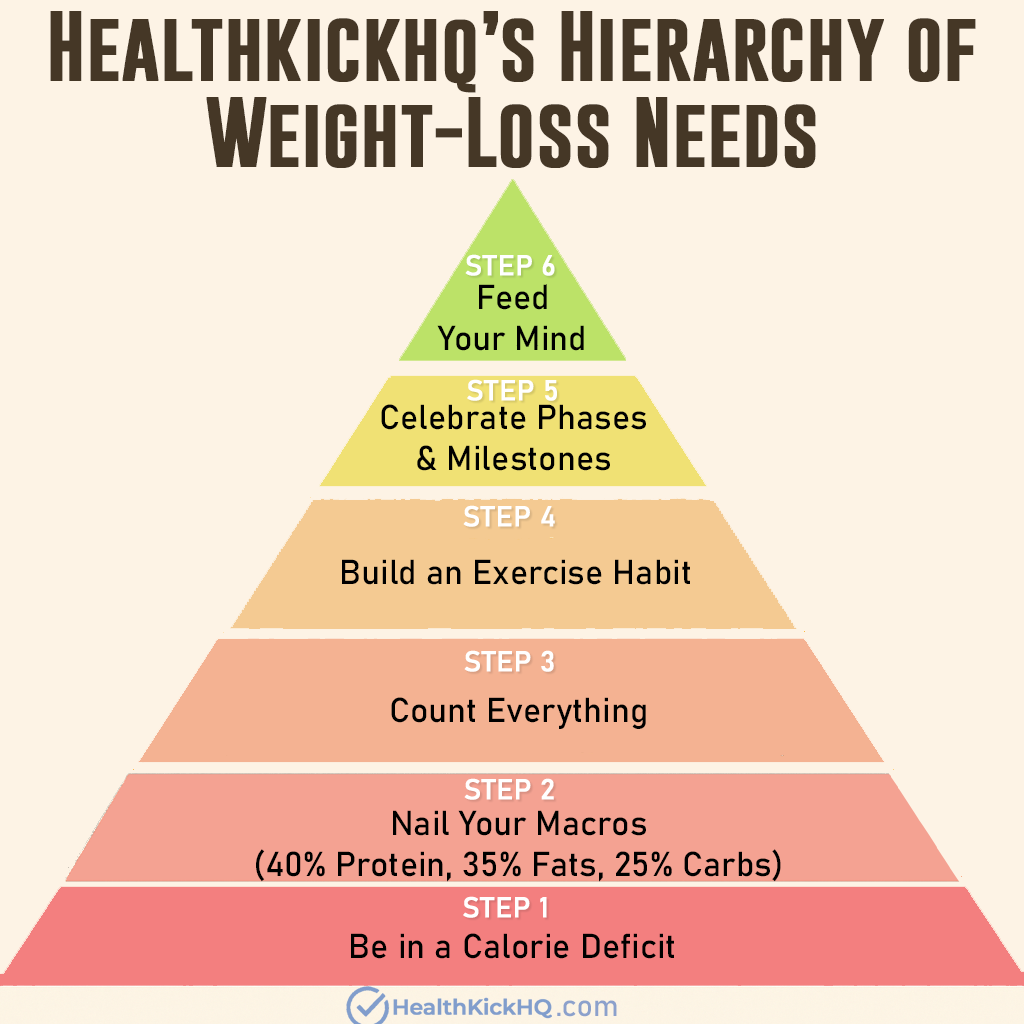STEP 2: Nail Your Macros
40% PROTEIN, 35% FATS, 25% CARBS
By Chad | Updated 6/21/2025
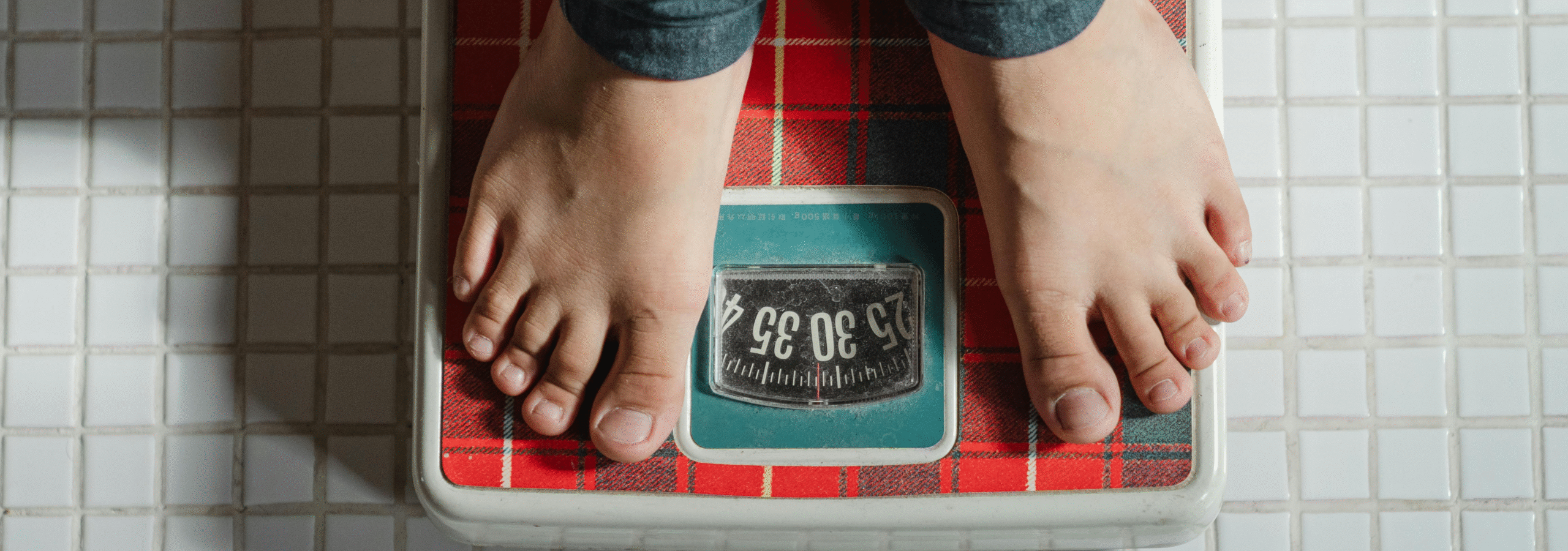
Each Macronutrient serves a purpose.
I know, I know: Everyone insists you cut out something.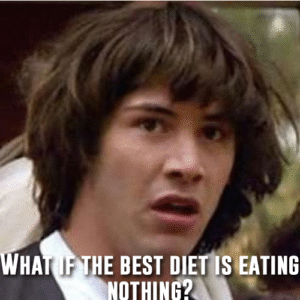
“No carbs!”
“No fats!”
“No fruit!”
I’m here to tell you to just cut everything.
📢YOU HEARD ME!
Don’t eat anything. That’ll shut up the haters.
Sure, you’ll die, but you’ll look terrific. And no one will be able to bother you ever again about cutting out a certain food item. (Disclaimer: Jokes, obviously… but people telling you to cut just about everything out of your diet can be super annoying…)
The Role of Each Macro
The truth is: each macro nutrient has a role to play in your health. Food consists of three major macronutrients: protein, fats , and carbs.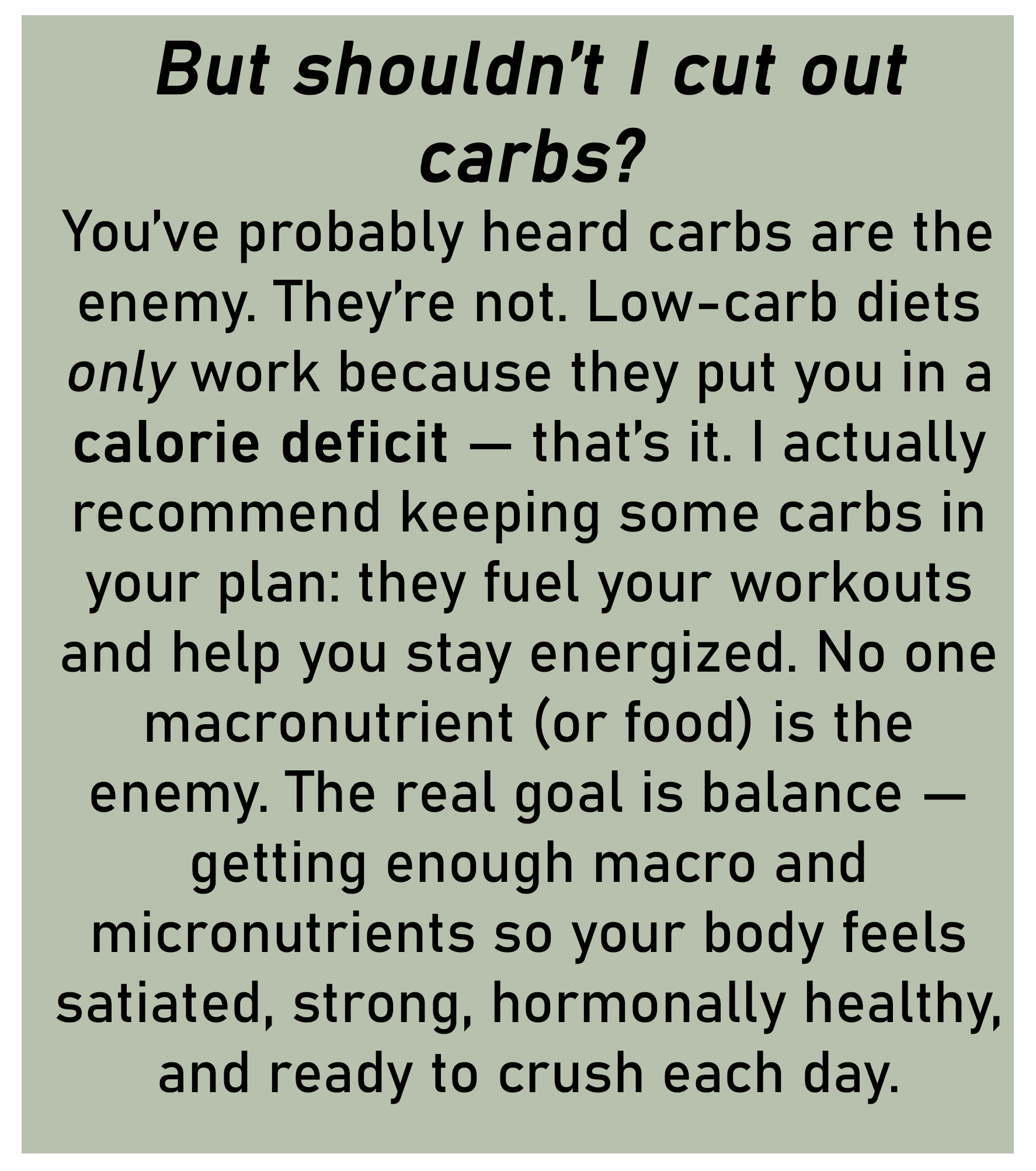
-
- Protein – Protein helps build muscle, makes you feel full, and maintains lean muscle mass as you lose weight. That’s right: it helps maintain muscle.
- Fats – Fats help regulate hormones, helps brain function, and makes you feel fuller. If you cut out fats, women could stop having their period. Men could lower their testosterone. It could ruin your mood. You could be stupid.
- Carbs – Carbs are fuel: they give you energy to get through the day. If you cut out carbs completely, good luck bringing a full effort to the gym.
No food is the enemy. Not one macro is the enemy. All play an important role in your diet.
High-Protein Low-Calorie Diets – The Sweet Spot
In the intro to this course, I promised you could feel full, eat delicious food, and still lose weight. Finding the macro sweet spot is how you do that.
The diet I recommend is a high-protein low calorie diet. Studies consistently show that high-protein, lower-calorie diets lead to the greatest long-term success (source). High-protein meals help you feel fuller, longer. Additionally, consuming ample protein helps preserve muscle and lean body mass as you shed fat (source).
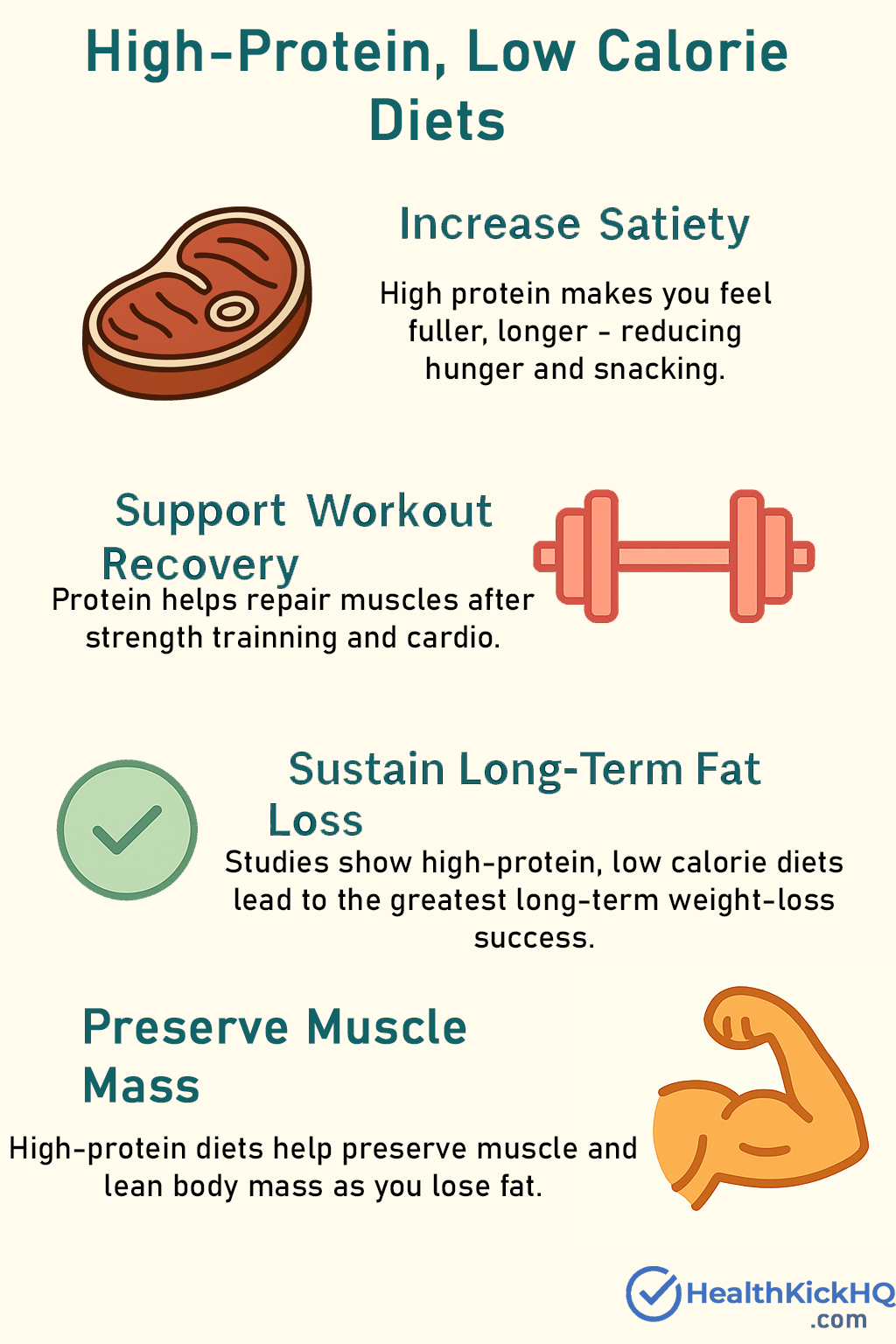
This is why I always recommend adopting a high-protein approach.
Disclaimer
If you’re new to dieting, some people love this lesson because it shows you how to feel satisfied and eat well while losing weight. Others find it overwhelming at first.
If this feels too complicated right now, you have my permission to simplify things for your first month only. Instead, you can:
- Skip this lesson temporarily. Come back after one month to implement these strategies. In the meantime, simply do the following:
- Limit or eliminate sweets and snack foods.
- Stick to your daily calorie target!!! (you *must* do this)
- Avoid regular soda, juices, or sports drinks (diet or zero-sugar sodas are fine).
- Eat at least 150–200 calories worth of vegetables every day (as part of your daily calorie total).
- Prioritize lean meats and eggs in your meals. Try scrambling eggs with low-fat cottage cheese, egg whites, green peppers, red peppers, onions, spinach, and kale for a tasty, filling breakfast.
- Minimize ultra-processed foods.
- In addition to all the above, 1–2 servings of protein foods a day (100-300 calories/seriving). These can be:
- Protein powder
- Low-fat Greek yogurt
- Low-fat cottage cheese
- Egg whites (you can mix with eggs)
If you do these simple things, you can comfortably skip this lesson for one month—just make sure you return afterward.
However, if you’re ready now to eat well, feel full, and maximize your diet’s effectiveness, this lesson is for you!
Understanding Macros
For weight loss, I recommend roughly the following macro breakdown (you’ll never hit these exactly, but get as close as you can to these numbers every day):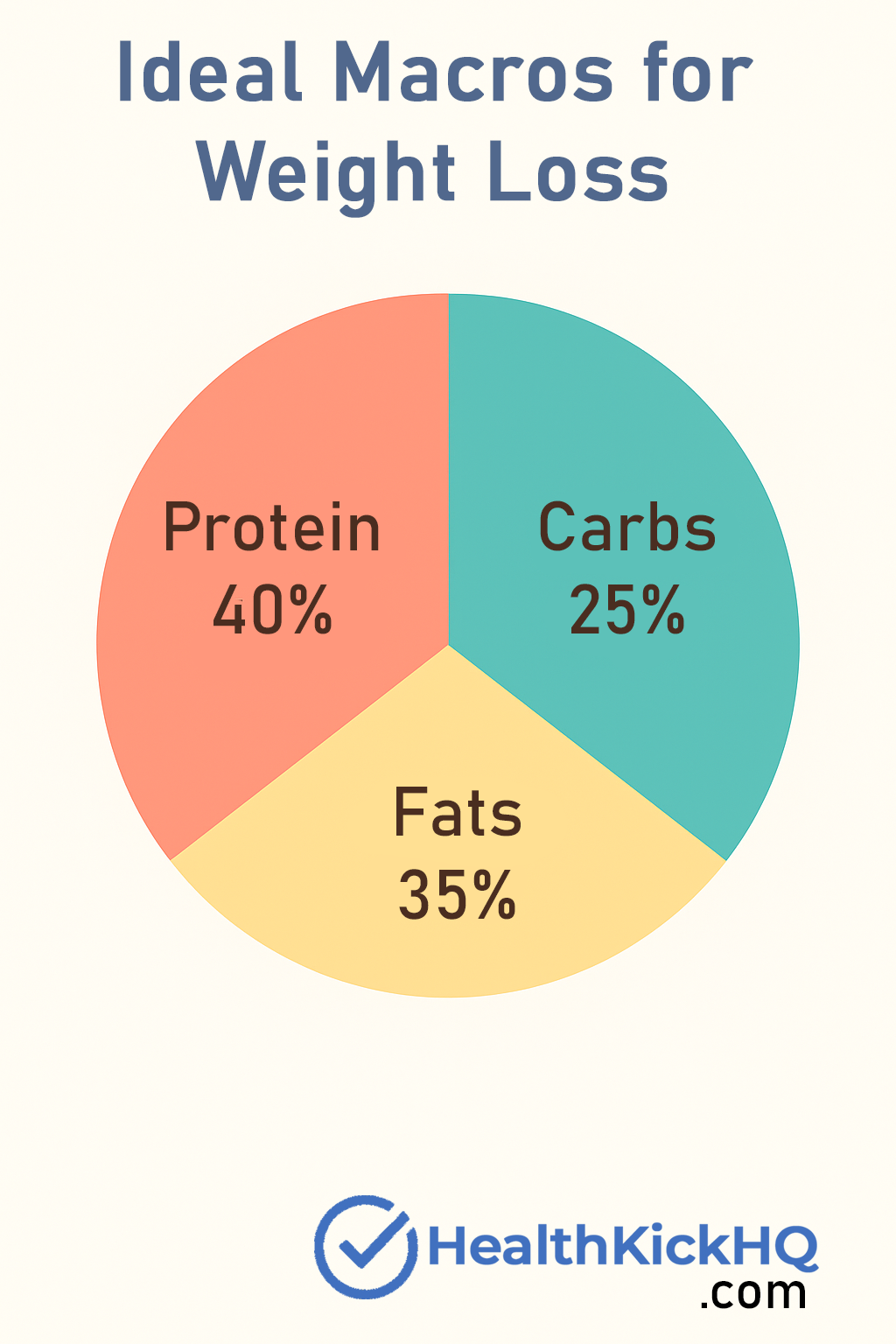
- Protein: 40%
- Fats: 35%
- Carbs: 25%
This means that by the end of each day, about 40% of your calories should come from protein, 35% from fats, and 25% from carbs.
Understanding the Math
- 1 gram of Protein = 4 calories
- 1 gram of Carbs = 4 calories
- 1 gram of Fat = 9 calories
If you’re eating 1,800 calories per day, your macros determine exactly how those calories break down:
- Protein: 720 calories → 180 grams
- Fat: 630 calories → 70 grams
- Carbs: 450 calories → 113 grams
How many grams of each should You eat in a day?
This should mean you eat about:
- Protein: 0.7 – 1 grams per day per pound of goal weight.
- Fats: 0.3-0.5 grams per day per pound of goal goal weight.
But I wanted to simplify this for you. The calculator below will do the math for you. It will give you your RMR (same as last lesson), but it adds the recommended macro breakdown tailored to YOUR body.
RMR, Calories & Macros Calculator
For Weight-Loss
RMR (Resting Metabolic Rate): —
Recommended Calories / Day: —
Macros (per day):
• Protein (40 %): —
• Carbs (25 %): —
• Fat (35 %): —
Practical Application
Throughout each day, focus on choosing foods that roughly align with this 40% protein, 35% fat, 25% carb breakdown. When you reach your daily calorie limit, stop eating for the day.
Since most meals won’t align perfectly with the 40/35/25 rule, it’s smart to add 1-2 high-protein snacks a day to increase your protein profile. Here are some good high-protein recommendations:
-
- Low-Fat Greek Yogurt
- Low-Fat Cottage Cheese
- Protein Drinks/Powder*
- Protein Bars*
- Egg Whites (mix with a real egg for more micronutrients/flavor)
- Most meat (except deli meats)
* 🚨Rule🚨
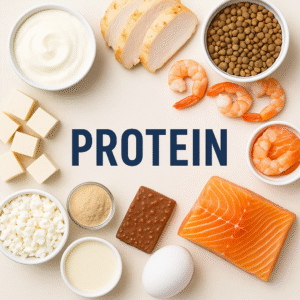 Something is considered a *good* source of protein and can be used as a protein snack if it follows this rule:
Something is considered a *good* source of protein and can be used as a protein snack if it follows this rule:
Rule of Thumb: (Protein grams × 10) > Calories = Good protein source
For instance:
-
- Protein Bar A
- 150 calories
- 28 g of protein
- 280>150, so it is a good source of protein
- Protein Bar B
- 150 calories
- 10 g of protein
- 100<150, so it’s NOT a good source of protein
- Protein Bar A
Use that rule of thumb any time you’re trying to add protein to your day.
Micronutrients still matter:
Get at least 2 cups of non-starchy veggies and a cup of fruit daily, plus a basic multivitamin. Count it and add it to your calorie total. I add frozen spinach to almost everything I make. You can’t taste it, it loads things up with micronutrients, it’s full of fiber, and it makes you feel fuller. I put it in eggs, smoothies, pasta, etc.
Also: try adding mixed berries to low-fat Greek yogurt. It’s delicious and is a health-powerhouse.
Eggs yolks are a great source of micronutrients. Egg whites are a great source of protein. Combine 1-2 eggs with 1-2 egg whites with some spinach for a health powerhouse.
If tracking macros helps you stay on track, consider using apps like MyFitnessPal or LoseIt. You can even let AI help—just snap a photo of the food label and ask ChatGPT or Gemini to tally the macro breakdown for you (of course after weighing it with a food scale… more on that later).
What Should You Actually Eat?
Here’s a helpful cheat sheet so you’re not left guessing mid-meal:
| Macro | Best Sources |
| Protein | Chicken, turkey, eggs (especially egg whites), low-fat Greek yogurt, tofu, protein powder/shakes, low-fat cottage cheese, tuna, lean beef |
| Carbs | Brown rice, oats, sweet potatoes, fruits, veggies, whole-grain bread, quinoa, beans, pasta |
| Fats | Avocados, olive oil, nuts, seeds, nut butters, fatty fish, eggs |
Meal Tip:
Try including all three macros in each meal for optimal energy, nutritional balance, and sustained fullness.
Common Macro Mistakes to Avoid
❌ Not eating enough protein
❌ Cutting carbs too low (this leads to low energy)
❌ Treating fats like the enemy (healthy fats help you feel better overall)
Important tip: Fiber
Fiber is one of the most underrated tools for weight loss. It helps you feel full, steadies blood sugar, and supports healthy digestion, all while adding very few calories.
Daily Targets:
-
- Men: 30 to 40 grams per day
- Women: 20 to 30 grams per day
Strategy: start tracking your daily fiber intake along with your calories and macros. Do NOT increase all at once (it could mess with digestion). Slowly increase (by about a gram a day, while drinking plenty of fluids) until you reach the recommended target.
Here are some good sources of fiber to get you started: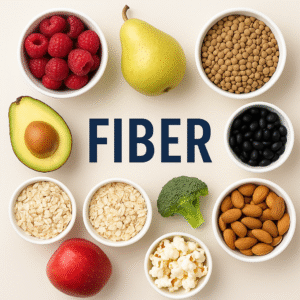
-
-
Raspberries (1 cup): 8 g
-
Black beans (1 cup, cooked): 15 g
-
Lentils (1 cup, cooked): 15 g
-
Avocado (1 medium): 10 g
-
Pear (1 medium, with skin): 6 g
-
Apple (1 medium, with skin): 4 g
-
Broccoli (1 cup, cooked): 5 g
-
Oats (1 cup, cooked): 4 g
-
Popcorn (3 cups, air-popped): 4 g
-
Almonds (1 oz, about 23 nuts): 3.5 g
-
And of course, you can always add a fiber supplement. This one by Nutricost is my favorite, I can’t taste it in anything so I just started sprinkling a couple of grams on everything I make until I reached my targets. Of course, I measured the grams with a food scale (never guess).
Example Daily Meal Plan (1,800 Calories)
In a different blog post, we gave some simple recipes that follow this macro profile. Check it out.
Here’s a practical, delicious example day that perfectly hits these macros:
-
- Breakfast: 2 whole eggs and 3 egg whites scrambled with ½ serving low-fat cottage cheese, chia seeds, 1/2 of an avocado, green/red peppers, onions, spinach, and kale.
- Lunch: Grilled chicken thigh served over 1/2 a serving of rice, 1/2 an avacdo, side of Greek yogurt topped with blueberries, side of steamed veggies.
- Snack: Protein shake made from 1 serving protein powder, 4 strawberries, 1/4 cup blueberries, spinach, kale, no-calorie sweetener, and water.
- Dinner: Grilled 4-oz pork steak, baked potato topped with light sour cream, and salt. Steamed vegetables on the side.
Approximate totals:
-
- Calories: ~1850
- Protein: ~200g (~41%)
- Carbs: 142g (29%)
- Fat: ~63g (29%)
- Fiber: ~34g
Final Tip:
As a safety net during your diet transition, I do highly recommend adding a daily multivitamin. You can pick one up affordably at Walmart or Costco. This ensures you’re not missing essential nutrients as you adjust to your new eating habits.
Here are three I have used in the past and like:
-
- Thorne Basic Multivitamin (the one I use now and like the most)
- Nutricost Daily Multivitamin (inexpensive and great brand)
- Kirkland Signature Multivitamin (also available at Costco)
Feel free to find your own. I am not sponsored by anybody, just find a reputable brand and it will likely cover your micronutrient needs.
And that’s it! You’re ready to move forward confidently. Eat well, feel satisfied, and watch the pounds drop. You’ve got this!
📌Notes to Keep From This Lesson 📌
- My daily Calorie intake ________
- My daily macro breakdown:
- _____ g Protein
- _____ g Carbs
- _____ g Fats
- _____ g Fiber
- Favorite fruits and veggies ____________________
- The multivitamin I will take ___________________
